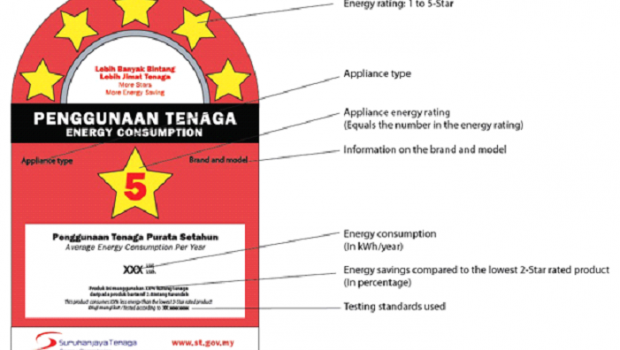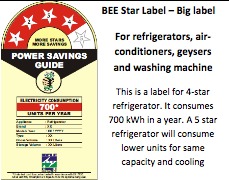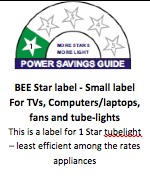Understanding the Star Rating of Electrical Appliances
Every house needs a variety of electrical appliances. We choose our household appliances after considering various factors such as brand name, quality, color, style, features, and so on. But the most critical influencer of our purchasing decisions is almost always, the price of the product. What we miss out in the process of choosing the right appliance for us is the value or cost of using the device.
To help consumers make informed and better decisions about electrical appliances, the Bureau of Energy Efficiency (BEE), Ministry of Power, devised a smart system of understanding the efficiency of appliances. In 2006, it launched the Standards and Labeling Program, which requires manufacturers to label their products with details about the electricity consumption. This initiative aims to boost the production of energy efficient appliances and induce a shift in the preference pattern of consumers from conventional appliances towards their energy efficient counterparts.
After extensive research, BEE introduced this labeling system through which the efficiency of an electrical appliance is highlighted by ‘STARS.’ The more the stars, the more are the savings on energy costs. The appliances having the least amount of energy consumption have the highest number of stars, and the star rating follows a descending order as the energy consumption of an appliance goes up.
While this program is mandatory for some appliances, it is optional for others. As of now, the appliances that fall under the compulsory category are – Frost-free refrigerators, Tubular Fluorescent Lamps, Room Air-Conditioners, Distribution Transformers, Color TVs, CST ACs, Direct Cool Refrigerators, and Electric Geysers. Star rating is particularly beneficial when it comes to large appliances such as TV, AC, refrigerator, etc., which can be used for a very long period of time (8-10 years) as they would help you to have a fair estimate about the average energy consumption of these devices.
Label Sizes
The BEE energy label size has two variants depending on the energy consumption and product size.
Big label
Big energy label is for large appliances that consume a good amount of electricity. These labels also contain additional information about the product such as its brand name, product category, and annual energy consumption.
Small label
Small energy label is for smaller appliances like lights, ceiling fans, etc., as these usually have lower energy consumption.
With each passing year, new technological innovations come to the scene, and thus, BEE energy rating labels are also updated from time to time to keep up with the latest technological interventions. For instance, a 5-Star rated refrigerator manufactured in 2017 may come at par with a 4-Star rated refrigerator in 2018. Also, an appliance manufactured by a brand in 2017 under 4-Star rating may be launched in the market as a 5-Star rated product in 2018 after the inclusion of the latest technology.
So, now you know what star ratings on appliances actually mean. BEE has done its part, and it’s your turn now to take responsibility towards building an energy efficient nation. Replacing old and conventional appliances in your home with BEE Star rated energy efficient appliances would be a great start. In addition to that, you could start making little changes in your everyday habits to conserve energy such as switching off devices and unplugging them when not in use, insulating your water heating system, air drying utensils and clothes, and so on. Energy consumption is the order of the day, and each little change can take us one step closer towards conserving the environment and our energy resources.
Author Bio: Arindam Paul is a founding member of Atomberg Technologies, a startup working towards creating unique energy efficient and tech savvy products. He is currently heading the Marketing and Long term strategy division at Atomberg and is aiming to disrupt the world of household appliances.

















